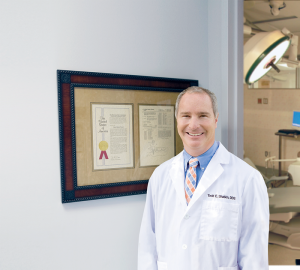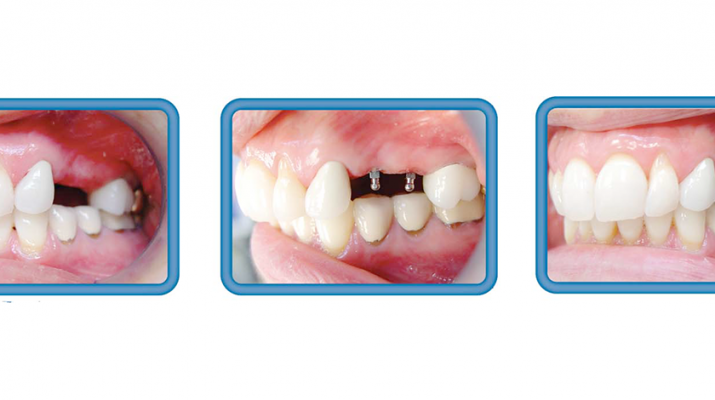New techniques make implants cheaper, more secure and with more natural look
By Deborah Jeanne Sergeant

Introduced in the mid-1960s, dental implants have come a long way in the materials used and the procedure to place them.
Implants can replace a missing tooth to fill a gap in the smile. Strategically placed implants can also help secure a bridge or denture so the wearer feels more comfortable with the prosthesis since they won’t need adhesive to hold them in place.
Implants can also replace up to a full mouth of teeth with a natural look that’s undetectable from natural teeth in both form and function. Eliminating dentures improves the patient’s ability to enjoy food, since dentures cover the taste buds on the soft palate. Patients also don’t need to worry about dentures slipping, since implants are considered permanent tooth replacements.
Konstantinos Chochlidakis, prosthodontist, director of Prosthodontic Clinic, Eastman Institute for Oral Health at UR Medicine in Rochester, said that a pre-surgery CT scan helps the surgeon better visualize and plan the implant before performing the surgery and achieve a more precise placement.
“We use implant planning software,” Chochlidakis said. “The surgeon can digitally perform the surgery in the software beforehand so he knows just where to place the screw.”
Todd E. Shatkin, cosmetic dentist and director of dentistry at Aesthetic Associates Centre for Plastic Surgery and Dentistry, serves as president of the International Academy of Mini Dental Implants.
Along with CT scans, he uses mini dental implants which require what he described as “pinhole sized openings” unlike the large incisions required for traditional implants.
The smaller incision lessens pain, healing time and the risk for infection. He added that the guide also helps in placing the screw in the optimal location.
Some people with long-term tooth loss lose bone over time. Using mini dental implants, a procedure for which Shatkin said he has developed and taught to dentists worldwide, does not require as much bone nor the need for bone grafting and sinus lift surgery, which are common with larger-sized implant screws.
In fact, Shatkin calls it a “non-surgical technique” that requires no sutures or stitches. Patients need only local anesthesia and can resume normal activity right away.
“You can put a crown or a denture on almost immediately,” Shatkin said.
He added that mini implants cost 30 to 50 percent less than traditionally sized implants because patients spend less time in the chair. General dentists trained in the procedure can insert them, which means that patients won’t require referrals to dental surgeons.
Once the screw is secured into place, the crown is added. The two-part mini implant is stronger and more secure than the multiple parts of the traditionally-sized implant.
Shatkin also operates Shatkin FIRST in Amherst, a dental lab that makes the appliances for his dental office and offices worldwide. He said that using a titanium screw instead of steel has helped create a stronger bond to the bone, as well as decrease the healing time. Many of Shatkin’s patients can leave with new teeth within an hour — even a full mouth of implants.
Shatkin said that most patients accept implants well. Even older patients who cannot tolerate surgery well are usually good candidates for the procedure since it’s minimally invasive. His success rate is more than 95 percent.

